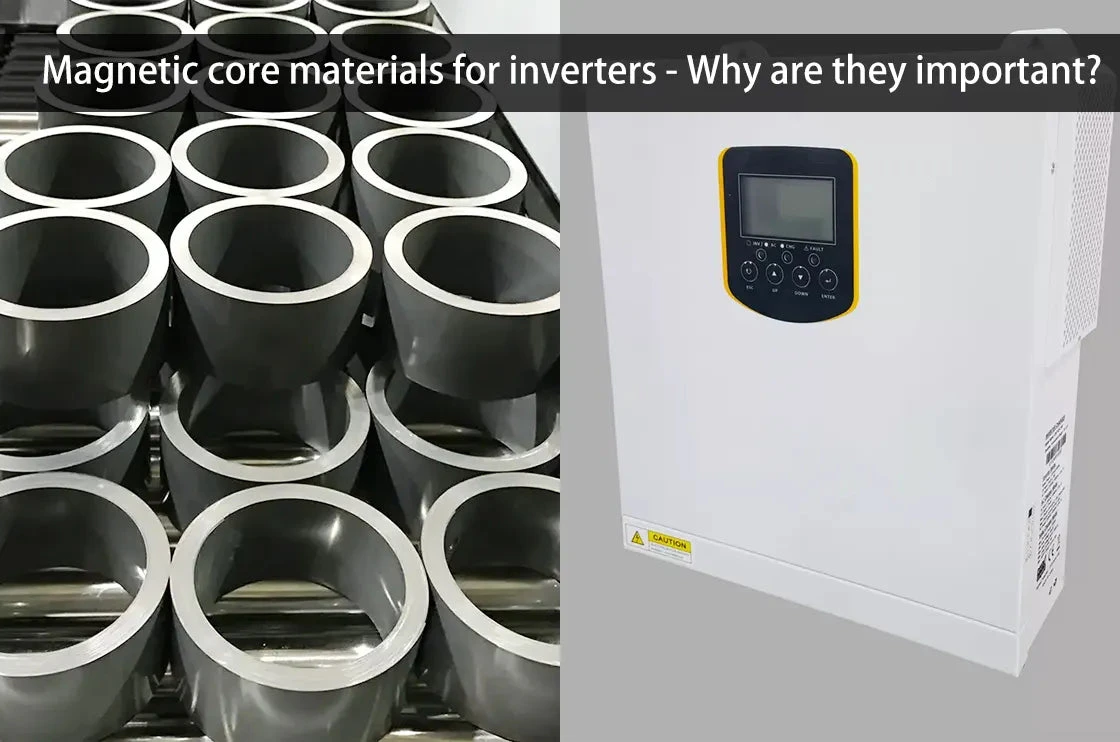In today's power electronics field, inverters serve as core components for energy conversion, directly impacting the efficiency and reliability of the entire system. Magnetic core materials, as an essential part of inverters, play a crucial role in their performance. This article will explore the importance of magnetic core materials in inverters and analyze how different materials affect inverter performance.

1. Basic Principles of Magnetic Core Materials
Magnetic core materials are primarily used in transformers and inductors within inverters, with their core function being to provide a magnetic path for efficient energy transfer and storage. The selection of magnetic core materials directly influences the efficiency, size, and cost of the inverter.
- Permeability: Permeability measures a material’s ability to conduct magnetic flux. High-permeability materials reduce the core size and enhance energy conversion efficiency.
- Saturation Magnetic Flux Density: This determines the maximum magnetic flux a core can handle. High saturation flux density materials enable greater energy transfer within a smaller volume.
- Losses: Magnetic core materials experience eddy current and hysteresis losses in alternating magnetic fields. Low-loss materials improve the overall efficiency of inverters.
2. Common Magnetic Core Materials and Their Characteristics
Silicon Steel Sheets
- Advantages: Low cost, mature processing technology, suitable for low-frequency applications.
- Disadvantages: High losses at high frequencies, low permeability.
Ferrites
- Advantages: Low losses at high frequencies, high permeability, suitable for high-frequency inverters.
- Disadvantages: Low saturation magnetic flux density, relatively high cost.
Amorphous Alloys
- Advantages: Extremely low losses at high frequencies, high permeability, suitable for high-efficiency inverters.
- Disadvantages: High cost, difficult to process.
Nanocrystalline Alloys
- Advantages: Low losses at high frequencies, high saturation magnetic flux density, excellent overall performance.
- Disadvantages: High cost, complex production process.
3. Impact of Magnetic Core Materials on Inverter Performance
-
Efficiency:
High-efficiency magnetic core materials significantly reduce energy losses in inverters, enhancing overall performance. For instance, amorphous and nanocrystalline alloys excel in high-frequency inverters, effectively minimizing eddy current and hysteresis losses. -
Size and Weight:
High-permeability and high-saturation flux density materials allow for smaller and lighter magnetic cores, making inverters more compact and portable. This is particularly important for applications such as portable devices and electric vehicles. -
Cost:
Choosing magnetic core materials requires balancing performance and cost. While silicon steel is affordable, its performance is insufficient for high-frequency applications. In contrast, amorphous and nanocrystalline alloys offer superior performance but at a higher cost. -
Reliability:
The stability and durability of magnetic core materials directly affect the reliability of inverters. Under high-temperature and high-frequency conditions, maintaining material performance stability is crucial.
4. Future Trends
With continuous advancements in power electronics, the demand for higher inverter performance is increasing. Future developments in magnetic core materials will focus on:
- High-Frequency, Low-Loss Materials: The growing adoption of high-frequency inverters will drive demand for materials with minimal losses. Amorphous and nanocrystalline alloys are expected to see wider applications.
- High Saturation Magnetic Flux Density Materials: These materials enable greater energy transfer in smaller volumes, essential for high-power-density inverters.
- Low-Cost, High-Performance Materials: Reducing material costs while maintaining performance will be a key research focus. The use of new composite materials and advanced manufacturing technologies may achieve this goal.
Magnetic core materials play a critical role in energy conversion within inverters. Choosing the right core materials not only improves efficiency and reliability but also reduces size, weight, and costs. As material science advances, more high-performance, cost-effective magnetic core materials will be used in inverters, driving further innovation in power electronics.
By understanding the characteristics and applications of magnetic core materials, we can better design and optimize inverters to meet various application requirements. Hopefully, this article provides valuable insights to support innovation and development in inverter technology.

